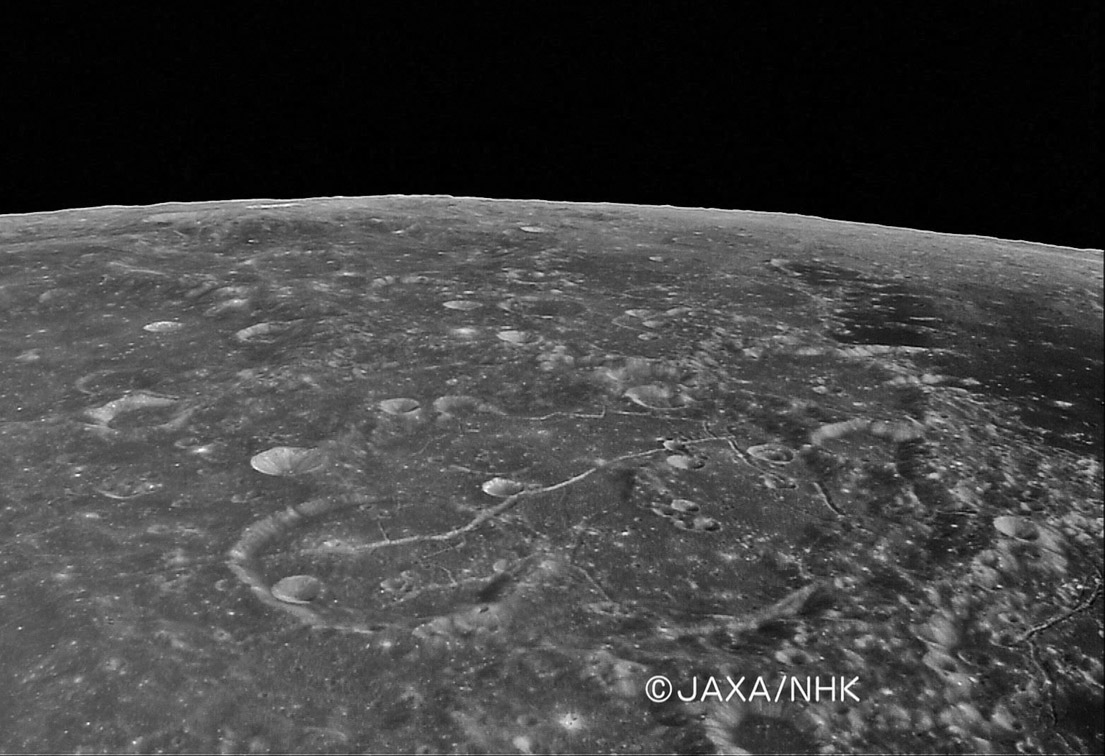
image from Kaguya/Selene spacecraft of the Japan Aerospace Exploration Agency (JAXA)
Kaguya is a name we will all become very familiar with. Based on the first released images from the least sensitive scientific instrument on the Japanese lunar orbiter, we are in for a flood of wondrous new views of the Moon. The High Definition TV camera was apparently included on the spacecraft to provide PR views of the Moon and Earth, and its spectacular video and scenes from it don’t disappoint. This view from 100 km over the surface looks northward across the 109 km wide crater Repsold. This would be one of the most famous floor-fractured craters on the Moon if it were better placed for terrestrial observers. Repsold probably has more and larger rilles than any nearside crater. The large rille - like an exclamation mark - is about 330 m deep, according to measures made by Jim Mosher on the Lunar Orbiter image of Repsold. The rilles in Repsold probably are related to volcanism - notice the concentric crater at the north end of Repsold - but not to surface flows of lava. More likely, magma ponded under the crater, and under its satellite Repsold G at bottom left, and cracked their floors as it domed them upward. The land side of northwest Oceanus Procellarum has the richest concentration of floor-fractured craters on the Moon. Kaguya’s HDTV imaged these craters before reaching Repsold. We all should thank JAXA for releasing this video, and hope that they will continue to share with the world a river of videos and scientific data so we all can glory in their achievement.
Technical Details:
Oct 31, 2007.
Related Links:
Rükl plate I
Yesterday's LPOD: Lunar Stonehenge
Tomorrow's LPOD: A Billion Year Old View
COMMENTS?
Register, Log in, and join in the comments.



